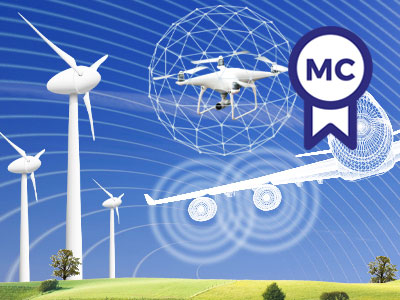Overview
Learn how to set up numerical computations to predict both noise sources and their sound propagation.
The field of Aeroacoustics has developed rapidly with the aim of reducing noise from mechanical systems while safely and effectively achieving maximum performance.
Computational methods are essential today for both the design of low noise components and for the correct computation of the noise sources, particularly when dealing with complex systems.
In this course you will learn about the computational methods needed to solve acoustic and aeroacoustic problems, the differences between the numerical schemes, and the challenges in their applications.
By the end of the course, you will have knowledge of both the theoretical fundamentals and practical challenges to select and apply the proper numerical method.
Apply this knowledge to your own work
This course is ideal for professionals with a mechanical (or similar) engineering background interested in the fundamentals of computational methods to derive noise sources and their propagated sound. You will learn how to best set up a computation to achieve a correct, robust and accurate prediction of the noise sources of your mechanical system, and of the predicted sound at a specified receiver.
You will be guided by instructors with years of experience in numerical and experimental aeroacoustics, and have access to video lessons, practical exercises and discussion sessions.
After taking this course you will be able to:
- Apply numerical techniques to solve the acoustic wave equation.
- Compare different techniques for aerodynamic computations, boundary conditions, and acoustic analogies.
- Select the most appropriate technique for an industrial aeroacoustic problem, applying best practices and guidelines.
- Recognize limitations in the capabilities of aeroacoustics simulations and assess the accuracy of results.
This course has been supported by the DigiWind project, co-funded by the European Union under Grant Agreement No. 101122836. Views and opinions expressed are however those of the author(s) only and do not necessarily reflect those of the European Union or the European Health and Digital Executive Agency. Neither the European Union nor the granting authority can be held responsible for them.

Details
Course structure
Week 1: Definitions and governing equations
In this week, you will learn the fundamentals of acoustic sources.
- The wave equation and the plane wave.
- Fundamental solutions of the wave equation: mono/di/quadruple.
- The Fourier transform.
Week 2: Solution of the wave equation
In this week, you will learn the methods to solve the propagation of the acoustic waves in open and closed environments.
- General solution of the wave equation using the Green’s function.
- Solution of the wave equation in the frequency domain.
- Dispersion relation scheme for the solution of the wave equation.
- An example of numerical solution of the 1D wave equation.
Week 3: Theory of the acoustic analogy
In this week, the basic aspects of the aeroacoustic noise sources and the acoustic analogies will be treated.
- The concept of acoustic analogy
- Analogies comparisons between Lighthill, Curle, and Ffwocs-Williams and Hawkings
Week 4: Direct and hybrid numerical methods
In this week, you will learn how to choose and set up a solver for aeroacoustic purposes.
- Description and comparison of the numerical schemes for direct and hybrid methods
- Practical challenges in the selection and application of hybrid approaches
- Boundary conditions
- Examples of applications: how to build a computational setup depending on the problem.
Qualifications
Certificates
If you successfully complete this course you will earn a professional education certificate and you are eligible to receive 3.0 Continuing Education Units (CEUs).
Chartered Engineering Competences
All our online courses and programs have been matched to the competences determined by KIVI’s Competence Structure, a common frame of reference for everyone, across all disciplines, levels and roles.
These competences apply to this course:
- A1: Extend your theoretical knowledge of new and advancing technologies.
- E3: Undertake engineering activities in a way that contributes to sustainable development and a circular economy.
Admission
This course is primarily geared towards working professionals.
Prerequisites:
- Graduate-level understanding of partial differential equations.
- Basic algebra and integration methods.
Contact
If you have any questions about this course or the TU Delft online learning environment, please visit our Help & Support page.



